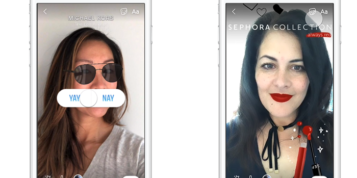In recent years, the immersive and addictive world of gaming has transcended beyond the realm of younger audiences and hardcore enthusiasts. With the widespread adoption of mobile technology, games like Angry Birds and Candy Crush have introduced gaming to new demographics; in fact, the average gamer is now 35 years old and 47% of gamers are women.
Consequently, it’s no wonder that marketers have begun to use gaming to better engage their customers, by creating bespoke gamified content that increases the amount of time consumers spend interacting with their brand. Interestingly, a recent survey found that 87% of retailers will use gamification marketing within the next three years, highlighting its potential for engaging with new and wider audiences.
Gamification can offer many benefits for marketers. Not only is it a creative way to stand out from your competitors, but it can also help educate your customers, encouraging them to grow into advanced users of your product. When utilised properly, the results of gamification can be very impressive and deliver strong outcomes for both your users and brand.
Gamification in action
Last year we ran an Easter campaign that utilised gamification in order to engage users through an “Easter Egg Hunt” challenge. Fifteen Easter eggs were hidden within different tools associated with our SEO platform, e.g. Dashboard, Traffic Analytics, SEO Content Analytics and the user profile itself, with each tool presenting varied degrees of difficulty.
Users were encouraged to go on a hunt and, as a reward, anyone who could find the 15 Easter eggs was awarded a list of the 10,000 most wanted keywords in 10 countries. The goal of the challenge was not only to promote the tools offered by the company, but also to make the users explore each functionality in a practical and experimental way.
Following the success of the Easter campaign, we decided to run with the festive theme a second time and in December we launched Santa’s Toy Factory. The game depicted Santa’s elves being busy making gifts for website owners and players scored points by grabbing toys that were aligned with important factors in SEO: healthy backlinks, social shares and super-keywords, avoiding algorithms that penalise websites for poor performance. The longer the game was played, the harder it became, reflecting the reality of the SEO environment. It was targeted to SEO experts for entertainment and amusement purposes, as well as B2B audiences, less familiar with SEO, to introduce them to important concepts.
Based on the final game score, players receive a personalised SEO prediction for the upcoming year from SEO Santa that can be shared on social media, boosting engagement and increasing brand exposure.
Trends in gamification
There are a couple of areas that unite almost all gamification cases in marketing: competition, potential to go viral, customer support, mobile friendly experience and post campaign nurturing. Following each of these steps is a great way to increase engagement with your gamified content.
- A bit of healthy competition: The willingness to compete is inherent to human nature, and gamification can allow your users to get into the spirit of competition. A reward is also a great incentive.
- Could this go viral?: A social sharing option should be available at each stage of the user’s progress. Create leaderboards, badges or any other form of shareable statements about the game.
- Mobile-Friendly Experience: The harshest message or tweet you can get during your gamification campaign is likely to come from outraged users who were very much willing to take part in your campaign, but could not do so because of the device they were using. Think of it from the start – if you want success, go mobile.
- What happens after?: A gamification campaign does not end once the game is complete. Provide people with a reward and a call to action: create a post that explains all the steps the user should have taken to come to the finish line; build a map that gives out a step-by-step analysis of the game; record a video. This will allow you to satisfy the user’s’ curiosity and, as a cherry on the top, it will also allow you to show off your product one more time.
What does the future hold for gamification?
With the gamification market expected to be worth $6 billion in 2019, we can expect to see a continuous increase in its use over the next year.
When it comes to customer engagement, gamification has plenty of obvious benefits: it’s an entertaining way to maintain customer interest in your product and organisation, and by sharing their results and experiences on social media, your customers expand the reach of the game to new potential customers while encouraging brand awareness.
Marketers are now called to implement gamification as part of their campaigns and show that it actually works. It’s crucial to keep your eyes on the scoreboard because this game isn’t over just yet.


